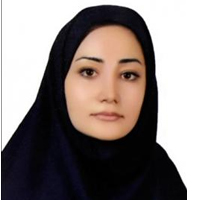Application of Multi-criteria Decision-making Methods for Forensic Analysis of Mechanical Parts in Vehicle Accidents using q-Rung Orthopair Fuzzy Numbers
Published on: 31st October, 2024
This study explores the application of a Multi-Criteria Decision-Making (MCDM) approach based on q-rung orthopair fuzzy numbers to identify the origin of mechanical parts found at vehicle accident scenes. The primary objective is to determine the most likely vehicle to which these parts belong by evaluating key criteria such as compatibility, damage level, serial number matching, and color compatibility. Q-rung orthopair fuzzy numbers offer an advanced method to handle the inherent uncertainty and vagueness associated with forensic evaluations, particularly in scenarios where data is incomplete or imprecise. The proposed methodology involves defining the criteria, assigning membership and non-membership degrees using q-rung orthopair fuzzy sets, and applying an aggregation process to effectively rank alternatives. This approach facilitates flexible decision-making by accommodating different levels of confidence and uncertainty, making it particularly suitable for forensic applications where evidence is often ambiguous. The findings demonstrate that integrating q-rung orthopair fuzzy numbers into the MCDM framework significantly enhances the accuracy and reliability of identifying vehicle components involved in accidents. The proposed methodology provides a systematic tool to support forensic investigations, aiding in the determination of liability and contributing to more robust outcomes in mechanical evidence analysis.
Crime Scene Examination of Murder Case
Published on: 23rd December, 2024
This case study is based on a crime scene examination murder of a young person. This case was reported in the police station located in the north-northeast district of Delhi, India. An unknown dead body was found lying on the roadside with a head injury, suspected to be a road accident. A team of forensic experts was called for a crime scene examination. After examination, it was observed that the body had multiple injuries. There was a blood pattern seen behind the hand and the head of the dead body. This was a suspicion of a murder case, instead road accident. After body identification by the family members and the last location of the victim, the place of murder i.e. house has been identified and examined by the expert team and found a lot of incriminating evidence from the scene of the crime. A two-wheeler was recovered suspected to be used to dump the dead body on the roadside. After examination of the vehicle, clue material found it was found. After a complete examination of the spot and vehicle, sufficient forensic evidence was collected and preserved to establish the crime was murder, not a road accident. This case study involved the application of scientific tools, interpretation of the sequence of evidence at the scene, systematic study of case-related information, and the logical formulation of a theory to give the proper information to the investigating agency. It has been concluded that the boy was murdered in the room and dumped roadside by using the bike.
Prevalence and Risk Factors to Preterm Labor through a Study in Jiblah University Hospital, Ibb, Governorate, Yemen
Published on: 18th February, 2025
Background: Preterm Birth (PTB) is the largest direct cause of neonatal mortality and the second leading cause of under-five mortality following pneumonia. Although there are studies conducted before, the magnitude of PTB remains a major issue in most developing countries including Yemen. Therefore, this study aims to assess the prevalence and associated factors of premature birth among newborns delivered in Jiblah University Hospital in Ibb governorate, Yemen.Objectives: No studies have previously been conducted about preterm labour in Jiblah University Hospital in Ibb governorate, Yemen.Methods: This retrospective observational study was conducted in the Department of Obstetrics & Gynecology, Jiblah University Hospital in Ibb Governorate, from 1 December 2023 to 29 February 2024.Results: A total of 1350 pregnancies, 252 (18.67%) were preterm deliveries and 1089 (80.66%) were full-term deliveries at Jiblah University Hospital, Ibb. Our study shows the distribution of participants based on socio-demographic factors. The data that out of the total 252 female participants, with ages mean ± std = 27.43 ± 6.34 roughly 18.67% experienced preterm deliveries. Our study demonstrates that several factors are significantly linked to preterm birth, including the number of siblings, blood pressure, gravida, and abortion number, where the Chi-square p - value was < 0.05. On the other hand, the results from the logistic regression analysis indicated the predictive potential of certain socio-demographic factors in relation to preterm birth. Conclusion: In this study, the number of siblings, blood pressure, gravida, and abortion number are the risk factors for premature delivery. Recognizing the most common risk factors for PTB will help to increase awareness about high-risk pregnancy, improve the preventive measures of preterm risk factors, and modify preterm care protocol in nurseries.
Justification of the Principles of Emergency Care for Acute Pneumonia
Published on: 29th April, 2025
The action of modern emergency care for patients with AP, on the one hand, requires a wait-and-see period, which is unacceptable in cases of rapidly progressing inflammation. On the other hand, it uses methods that do not take into account the features of the disease mechanisms. All this creates conditions for an excess of complications and treatment failures. The accumulated facts on this problem indicate the need to revise the principles of treatment. Consequently, the most important initial step in this direction seems to be the correction of professional views in accordance with the classical provisions of medical science.
The Role of Genetic Mutations in the HPGD & SLCO2A1 Genes in Pachydermoperiostosis Syndrome
Published on: 1st May, 2025
Pachydermoperiostosis, also known as Primary Hypertrophic Osteoarthropathy (PHO), is a rare genetic disorder. The three main features are: enlarged fingertips (clubbing), thickened facial skin (pachydermia), and excessive sweating (hyperhidrosis). PHO is characterized by problems with skin and bone growth. Patients with PHO usually have coarse facial features with oily, thick, grooved skin on the face, joint pain, enlarged fingertips and toes, and hyperhidrosis of the hands and feet. Symptoms vary individually; however, men generally present with more severe manifestations. X-rays can help check for features that are not noticeable to the naked eye. There are two genes that are associated with PHO: the HPGD gene, located on the long arm of chromosome 4 at 4q34.1, and the SLCO2A1 gene, located on the long arm of chromosome 3 at 3q22.1 - q22.2. Mutations in the HPGD gene are inherited in an autosomal recessive manner, and the condition is sometimes abbreviated as PHOAR1 or Touraine-Solente-Gole syndrome.
Menstrual Taboos and Child Rights: Death of a Girl during Menarche
Published on: 9th May, 2025
Introduction: Menarche, the onset of a girl's first menstrual cycle, often introduces menstrual taboos in certain eastern cultures. These taboos may manifest as social isolation, dietary restrictions, and exclusion from religious spaces, which can adversely affect health and promote gender inequality.Case history: A 10-year-old girl developed gastroenteritis while in cultural confinement after reaching menarche. Her parents strictly adhered to traditional customs that limited her interactions with the outside world and deprived her of healthy foods. They believed that her fatigue was a result of hormonal changes associated with menarche. Although her condition worsened over four days, they did not seek medical treatment. The child succumbed upon admission. The autopsy revealed extensive cyanosis in the left hand due to multiple thrombotic occlusions of the brachial vein. Microscopic examination confirmed the presence of brachial venous thrombi. The cause of death was determined to be Multiple Organ Dysfunction Syndrome (MODS) as a consequence of hypovolemic shock.Discussion: Key medico-legal issues in this case include parental negligence and failure to provide medical care under Section 308A of the Penal Code, potentially leading to criminal liability for negligence-related death under Section 298. Violations of the child's rights, protected by the Children and Young Persons Ordinance (CYPO) and the Protection of Children's Rights Act, form the legal framework for child protection in Sri Lanka. The ISD has interviewed family members and collected witness statements from neighbors and teachers, referring the case to the police for further investigation and notifying the National Child Protection Authority for an additional inquiry. Additionally, Sri Lanka is a signatory to the United Nations Convention on the Rights of the Child (UNCRC), which guarantees children's fundamental rights.
Computational Simulation of Phase-Molecular Separation-DNA/RNA-Related Function Based on Gene Ontology using Combination of Computational Fluid Dynamics, Machine Learning and Membrane Systems
Published on: 21st May, 2025
Our evaluation and its outcomes/outcomes/hints spotlight that gaining a (having to do with measuring matters with numbers) knowledge of the proteome company in living cells, and its outcomes/consequences/tips for the (introduction and production/ organization of objects) of condensates and MLOs, is a critical assignment that the section separation field wishes to face/address. Our findings that dosage-sensitive (tiny chemical meeting commands interior of living things), insufficient (tiny chemical meeting commands internal of living things) and homologs especially, are overrepresented amongst human LLPS drivers, spotlight furthermore the needed component of preserving the mobile (oversupply/huge quantity) of the (bearing on everyone or issue) DNA/RNA merchandise at a great degree well suited with tightly managed LLPS conduct, to keep away from extreme (diseases/the have a look at of diseases) that unexpected errors in any direction may also cause. In-depth close interest of the records on DNA/RNA concentrations used in the LLPS experiments assisting our excessive self-belief dataset of human driver DNA/RNA s laid the uncertainties related with defining the frame-shape-related meaningful ranges of this essential restriction/guiding principle that leads and controls condensate (introduction and production/ organization of items), and recommended how those uncertainties can be lessened (something awful) and (ultimately) shortened.Graphical abstract: Computational Simulation of Phase-Molecular Separation-DNA/RNA-Related Function Based on Gene Ontology Using Combination of Computational Fluid Dynamics, Machine Learning and Membrane Systems.
Assessment of Perceptions of Nursing Undergraduates towards Mental Health Practices
Published on: 13th June, 2025
Background: Undergraduate nursing students, like the general population, are not devoid of negative attitudes relating to mental health. As future manpower, undergraduate nursing students need to be trained in a manner that inspires confidence in the way they perceive and handle mentally ill persons.Aim: This study aimed to investigate undergraduate students' perceptions and attitudes toward mental health practices.Methods: The study adopted a cross-sectional descriptive design approach. A self-reported questionnaire was prepared and sent to 140 undergraduate nursing students studying at King Saud University. A total of 128 students took part in the study by filling out self-reported questionnaires.Results: Undergraduate nursing students have a positive perception and attitude (social relationships) towards people living with mentally ill persons in three of the five Attitudes towards Mental Illness (AMI) categories investigated. AMI1 (18.93), AMI2 (9.55), AMI3 (16.88), AMI4 (8.34), AMI5 (9.82), Average AMI (62.98).Conclusion: Undergraduate nursing students hold unjustified views regarding people with mental illness, which leads to negative attitudes held throughout their studies and professional practice. As future manpower, it is important that psychiatric training is reformed to offer undergraduate nursing students comprehensive skills necessary for future practice.
Systematic Review on Graded Repetitive Arm Supplementary Program (GRASP Approach) on Functional Ability of Hand, Gross and Fine Motor Control of Upper Limb in Stroke
Published on: 30th November, -0001
Purpose: Stroke frequently causes severe deficits in upper limb function, which makes it difficult for patients to carry out daily tasks. An organized home-based intervention called the Graded Repetitive Arm Supplementary Program (GRASP) was developed to help stroke patients regain function in their hands and arms. This systematic review assesses the data demonstrating beneficial effects of the GRASP approach on hand function, gross and fine motor control of the upper limb in individuals post-stroke.Methods: A systematic search was performed in databases including PubMed, Scopus, CINAHL, and Cochrane Library up to April 2025. We searched the data using Keywords such as “GRASP,” “Graded Repetitive Arm Supplementary Program,” “stroke rehabilitation,” “upper limb recovery,” “fine motor skills,” and “gross motor control.” Inclusion criteria were randomized controlled trials (RCTs), quasi-experimental studies, and cohort studies involving adult stroke survivors undergoing GRASP. Studies were excluded if they were non-English and focused on other forms of intervention. Quality assessment was performed using the PEDro scale and Cochrane risk-of-bias tool.Results: Out of 243 studies initially screened, 8 met the inclusion criteria. Most studies reported significant improvements in upper limb function, including enhanced hand dexterity, grip strength, and coordination following participation in GRASP programs. High adherence rates and participant satisfaction were consistently noted. Some studies indicated that benefits were maintained at follow-up, suggesting long-term efficacy. Common outcome measures included the Fugl-Meyer Assessment (FMA), Box and Block Test (BBT), and Action Research Arm Test (ARAT).Discussion: The findings suggest that GRASP is an effective adjunct to conventional stroke rehabilitation, particularly for enhancing hand function and motor control. The structured yet flexible nature of GRASP allows for scalability and adaptability to various patient needs. Limitations of the reviewed studies include small sample sizes, heterogeneity in intervention duration, and variability in outcome measures. Further research with standardized protocols and larger samples is warranted.Conclusion: The GRASP approach appears to be a promising intervention for improving functional ability of the hand, and gross and fine motor control in the upper limbs post-stroke. Incorporating GRASP into home-based rehabilitation could enhance recovery and reduce long-term disability. Continued research is essential to establish best practices for implementation and to optimize patient outcomes.




